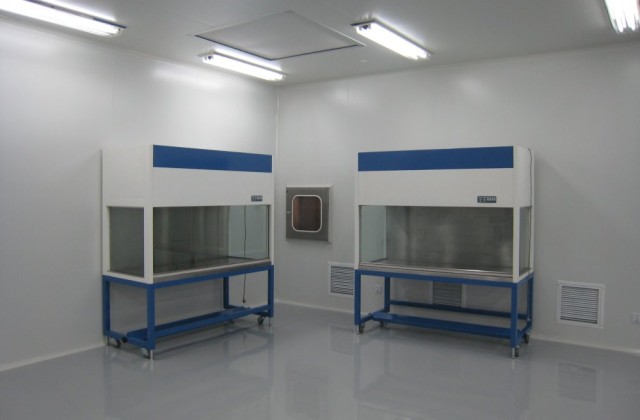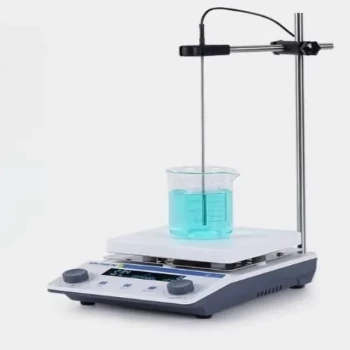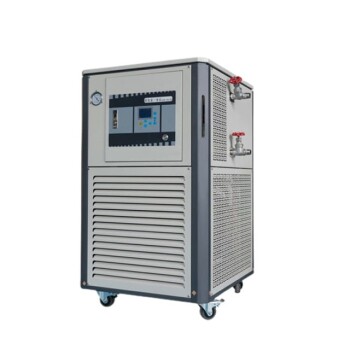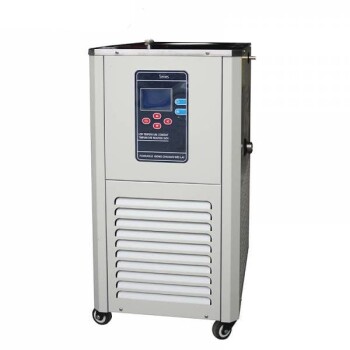Water Baths
Types of Water Baths
Constant temperature water baths are classified into several types, each designed to meet specific experimental requirements. The primary categories include ordinary water baths, magnetic stirring water baths, oscillating water baths, and multifunctional water baths.
-
Ordinary Water Baths: These are the most basic type, primarily relying on convection for heat distribution. While they are simple and cost-effective, they may not provide the most uniform temperature control, making them less suitable for applications requiring high precision.
-
Magnetic Stirring Water Baths: These baths incorporate a magnetic stirring mechanism, which helps in achieving more uniform heat distribution. This feature is particularly beneficial in applications where homogeneity of temperature is crucial, such as in enzymatic reactions and serological experiments.
-
Oscillating Water Baths: These baths use an oscillating mechanism to ensure thorough mixing of the water, thereby enhancing temperature uniformity. This type is ideal for applications where consistent temperature across the bath is essential, such as in microbiological assays and coliform determinations.
-
Multifunctional Water Baths: As the name suggests, these baths combine various functionalities, such as stirring, oscillation, and sometimes even circulation. They are highly versatile and can be tailored to meet a wide range of experimental needs, from sample thawing to warming reagents.

Additionally, water baths can be further differentiated based on their circulation mechanisms:
-
Circulating Water Baths: These are designed to circulate water throughout the bath, ensuring a more uniform temperature. This feature makes them ideal for applications requiring precise temperature control, such as enzymatic and serologic experiments.
-
Non-Circulating Water Baths: These rely primarily on convection for heat distribution, which can lead to less accurate temperature control. However, they can be enhanced with add-ons like stirring mechanisms to improve heat transfer uniformity.
Water baths are extensively used across various fields, including industrial clinical laboratories, academic facilities, government research laboratories, environmental applications, food technology, and wastewater plants. Their ability to retain heat efficiently makes them one of the earliest and most reliable means of incubation, suitable for a wide range of applications from sample thawing to microbiological assays.
When selecting a water bath, it is crucial to consider the electronic control systems. Digital control systems offer superior temperature uniformity, stability, and control, making them suitable for a multitude of applications, including bacteriological examinations, food processing/quality control procedures, and microbiology assays.
Metal Baths
Features and Applications
Metal baths are sophisticated devices designed for precise temperature control, primarily utilizing high-purity aluminum as their core material. These baths are equipped with advanced microcomputer systems that allow for meticulous control over temperature settings, ensuring consistency and accuracy in various laboratory applications.
One of the primary uses of metal baths is in sample storage, where the ability to maintain a stable temperature is crucial for preserving the integrity of biological and chemical samples. This feature makes them indispensable in fields such as biotechnology and pharmaceuticals.

In addition to sample storage, metal baths are extensively used in DNA amplification processes. The precise temperature control provided by these baths is essential for the success of polymerase chain reaction (PCR) techniques, which are fundamental in molecular biology and genetic research.
Another significant application of metal baths is in serum coagulation assays. These assays are critical in clinical diagnostics for assessing blood clotting factors and monitoring anticoagulant therapy. The ability of metal baths to maintain a consistent temperature is vital for accurate and reliable results in these tests.
| Application | Importance |
|---|---|
| Sample Storage | Preserves sample integrity in biotechnology and pharmaceuticals |
| DNA Amplification | Essential for PCR techniques in molecular biology and genetic research |
| Serum Coagulation | Critical in clinical diagnostics for assessing blood clotting factors |
The combination of high-purity aluminum and microcomputer control not only enhances the functionality of metal baths but also extends their applicability across diverse scientific disciplines, making them a versatile tool in modern laboratories.
Electric Heating Plates
Construction and Use
Electric heating plates are meticulously constructed using electric heating alloy wire and mica soft plates, which are then encased within durable metal plates. This design ensures efficient and even heat distribution, making these plates highly versatile for a wide array of heating applications in laboratory settings.
The core components, electric heating alloy wire and mica soft plates, play pivotal roles in the performance of these heating plates. The electric heating alloy wire, often made from materials like Nichrome, provides a stable and reliable heat source. This wire is wound in a specific pattern to optimize heat output and distribution.
Mica soft plates, known for their excellent insulating properties and thermal resistance, are strategically placed to support and protect the heating elements. This combination of materials ensures that the heat generated is effectively transferred to the metal plates, which serve as the primary heating surface.
The metal plates, typically constructed from stainless steel or aluminum, not only enhance the durability of the heating plate but also facilitate easy cleaning and maintenance. Their robust design ensures that the heating plates can withstand the rigors of frequent laboratory use.
In summary, the construction of electric heating plates leverages high-quality materials and precise engineering to deliver reliable and efficient heating solutions. This makes them indispensable tools in various laboratory applications, from sample preparation to thermal analysis.
Muffle Furnaces
Types and Applications
Muffle furnaces are versatile heating devices available in various configurations, each tailored to specific laboratory needs. The most common types include box furnaces, tube furnaces, and crucible furnaces. These furnaces are integral in sample processing, particularly in water quality and environmental analysis.
-
Box Furnaces: These furnaces are designed with a rectangular chamber, offering a large heating area suitable for batch processing of multiple samples. They are ideal for applications requiring uniform heating across a broad surface, such as drying, annealing, and sintering.
-
Tube Furnaces: Characterized by a cylindrical heating chamber, tube furnaces are perfect for processes that involve the heating of long, narrow samples. They are commonly used in research involving ceramics, metals, and composites, where precise temperature control and uniformity are critical.
-
Crucible Furnaces: As the name suggests, these furnaces are equipped with crucibles for holding samples. They are particularly useful in high-temperature applications such as melting metals and glass, as well as in the decomposition of organic materials.

The applications of muffle furnaces extend beyond just water quality and environmental analysis. They are also employed in materials science for the synthesis and characterization of new materials, in metallurgy for the analysis of metal alloys, and in forensic science for the incineration of evidence. The flexibility and high-temperature capabilities of muffle furnaces make them indispensable in a wide range of scientific disciplines.
Electric Heating Jackets
Design and Benefits
Electric heating jackets are meticulously engineered to provide efficient and precise temperature control, making them indispensable in laboratory settings where consistent heating is crucial. These jackets are constructed using alkali-free glass fiber, a material known for its exceptional thermal resistance and durability. This ensures that the jackets can withstand the rigors of frequent use without compromising their structural integrity or performance.

In addition to the use of alkali-free glass fiber, these jackets incorporate spherical insulation technology. This innovative insulation method enhances the jacket's ability to retain heat, thereby reducing energy consumption and minimizing temperature fluctuations. The spherical insulation design also facilitates uniform heat distribution, ensuring that the entire surface area of the jacket remains at a consistent temperature, which is vital for maintaining the integrity of sensitive laboratory samples.
The combination of these advanced materials and insulation techniques results in jackets that offer fast heating capabilities. This rapid heating response is particularly advantageous in time-sensitive experiments, allowing researchers to achieve their desired temperature settings quickly and efficiently. Moreover, the precise temperature control provided by these jackets ensures that experiments can be conducted within the narrow temperature ranges often required in scientific research, thereby enhancing the accuracy and reliability of experimental outcomes.
| Feature | Benefit |
|---|---|
| Alkali-free glass fiber | High thermal resistance and durability |
| Spherical insulation | Efficient heat retention and uniform temperature distribution |
| Fast heating | Quick temperature response, ideal for time-sensitive experiments |
| Precise temperature control | Enhanced accuracy and reliability in experimental outcomes |
These design elements and benefits collectively make electric heating jackets a superior choice for laboratories where consistent and reliable heating is paramount.
Spray Dryers
Function and Applications
Spray dryers are versatile devices that excel in the drying of heat-sensitive liquids, making them indispensable in multiple industrial sectors. These dryers operate by atomizing liquid feed into a spray of fine droplets within a drying chamber, where hot air rapidly evaporates the moisture, leaving behind dry particles. This method ensures that the drying process is quick and efficient, minimizing the exposure of heat-sensitive materials to high temperatures.

In the chemical industry, spray dryers are utilized for the production of powders from solutions or slurries, facilitating the transformation of raw materials into stable, dry forms suitable for further processing or packaging. This technology is particularly beneficial for products that are sensitive to heat, such as certain polymers and resins.
The pharmaceutical industry also heavily relies on spray dryers for the production of drugs in powder form. This includes active pharmaceutical ingredients (APIs) and excipients, which require precise control over drying conditions to maintain their efficacy and stability. The ability to dry heat-sensitive compounds without degrading their chemical properties makes spray dryers an essential tool in pharmaceutical manufacturing.
| Industry | Application |
|---|---|
| Chemicals | Production of powders from solutions or slurries, transformation of raw materials |
| Pharmaceuticals | Production of drugs in powder form, including APIs and excipients |
Beyond chemicals and pharmaceuticals, spray dryers find applications in food processing, where they are used to produce instant coffee, milk powders, and various food additives. The consistent quality and rapid drying capabilities of spray dryers ensure that these products retain their flavor, texture, and nutritional value.
In summary, spray dryers are critical in industries where heat-sensitive materials need to be dried efficiently and effectively, ensuring product quality and process reliability.
Ash Content Measuring Instruments
Technology and Safety
Ash content measuring instruments employ advanced technology to ensure both precision and safety in their operation. These instruments utilize double gamma ray penetration, a method that significantly enhances the accuracy and speed of coal ash content measurement. This dual-ray system is designed to penetrate the coal sample more thoroughly, providing a more detailed analysis of the ash content within.

The use of gamma rays, while powerful, is meticulously managed to ensure safety. The radiation sources employed in these instruments are engineered to be safe and reliable, adhering to strict safety protocols. This includes robust shielding and automated control systems that minimize exposure risks. Operators are further protected through the implementation of remote monitoring and control features, which allow for the safe operation of these instruments without direct contact.
In addition to their safety features, these instruments are also equipped with advanced data processing capabilities. The collected data is analyzed using sophisticated algorithms, providing real-time feedback and ensuring that the measurements are both accurate and consistent. This technological integration not only enhances the efficiency of the measurement process but also ensures that the results are reliable and reproducible, making them suitable for use in various industrial applications.
Overall, the combination of advanced measurement technology and stringent safety measures makes these ash content measuring instruments an indispensable tool in industries where precise coal analysis is critical.
Gel Dryers
Process and Uses
Gel dryers play a crucial role in the laboratory, particularly in the field of molecular biology and biochemistry. These devices are designed to dehydrate gels, transforming them into transparent and shiny surfaces that are not only visually appealing but also highly practical for both immediate analysis and long-term storage. The process involves the controlled removal of water from the gel matrix, which ensures that the integrity of the samples is preserved.

The primary uses of gel dryers extend beyond mere preservation. Dried gels are often used in documentation, where they serve as permanent records of experiments. This is particularly useful in research settings where data integrity and reproducibility are paramount. Additionally, dried gels can be scanned or photographed for inclusion in reports and publications, providing a clear and detailed visual representation of the experimental results.
In terms of analysis, dried gels are easier to handle and transport compared to wet gels. They are less prone to contamination and degradation, making them ideal for sharing with collaborators or for submission to analytical facilities. The transparency of the dried gels also enhances the visibility of the sample bands, facilitating more accurate and precise data interpretation.
For long-term storage, gel dryers offer a reliable solution. Dried gels can be stored in archival-quality folders or boxes, ensuring that they remain in pristine condition for years. This is particularly beneficial in research institutions where historical data must be preserved for future reference or regulatory compliance.
In summary, gel dryers are indispensable tools in the laboratory, offering a versatile solution for both immediate analysis and long-term storage of gels. Their ability to produce high-quality, transparent dried gels makes them a valuable asset in various scientific disciplines.
Critical Point Dryers
Principles and Applications
Critical point dryers operate on a unique principle that leverages the properties of supercritical fluids, specifically liquid carbon dioxide and ethanol. These fluids, when brought to their critical points, exhibit properties that are intermediate between a gas and a liquid, allowing for efficient and gentle sample drying. This method is particularly advantageous in micro-nano processing, where maintaining the integrity of delicate samples is paramount.

The process involves several key steps:
- Saturation: The sample is first immersed in a bath of supercritical fluid, typically liquid carbon dioxide or ethanol, which penetrates the sample and displaces any existing moisture.
- Critical Point Transition: The temperature and pressure are adjusted to bring the fluid to its critical point. At this stage, the fluid's properties change, allowing it to remove moisture without causing phase changes that could damage the sample.
- Drainage and Evacuation: The supercritical fluid is then slowly drained from the sample, carrying away the moisture. This step is carefully controlled to prevent any sudden pressure or temperature changes that could harm the sample.
The applications of critical point dryers are extensive, particularly in fields where sample integrity is crucial:
- Microscopy: Ensuring that samples remain intact and free from artifacts during drying is essential for high-resolution imaging.
- Electron Microscopy: The gentle drying process prevents the collapse of fragile structures, which is critical for obtaining clear and accurate images.
- Material Science: In the study of micro-nano materials, preserving the structural integrity of samples is necessary for accurate characterization and analysis.
By minimizing sample damage, critical point dryers enable researchers to obtain high-quality data and maintain the structural integrity of their samples, making them indispensable tools in advanced scientific investigations.
Rapid Dryers
Mechanism and Benefits
Rapid dryers employ a fluidized bed process to achieve efficient drying while preventing the bonding of materials. This process involves suspending solid particles in a fluid, typically air, which allows for uniform heat distribution and rapid moisture evaporation. The fluidized bed creates a dynamic, bubbling effect that mimics the behavior of a boiling liquid, ensuring that each particle is exposed to the drying agent.

Key Mechanisms:
- Fluidization: The introduction of a gas or liquid through a bed of solid particles, causing them to behave like a fluid.
- Heat Transfer: Efficient heat exchange between the fluidizing medium and the particles, accelerating the drying process.
- Mass Transfer: Enhanced moisture removal due to the increased surface area and continuous agitation of particles.
Benefits:
- Preventing Bonding: The constant movement and separation of particles prevent agglomeration and adhesion, ensuring individual particle integrity.
- Efficiency: Rapid drying times reduce processing cycles, leading to increased throughput and productivity.
- Uniform Drying: The even distribution of heat ensures consistent moisture removal across all particles, minimizing variability in final product quality.
The fluidized bed process is particularly advantageous for heat-sensitive materials, as it minimizes thermal damage and maintains the integrity of delicate substances. This makes rapid dryers indispensable in industries such as pharmaceuticals, food processing, and chemical manufacturing, where product quality and consistency are paramount.
Constant Temperature Water Tanks
Uses and Types
Constant temperature water tanks are indispensable tools in various scientific fields, offering precise temperature control that is crucial for many experiments. Their versatility is reflected in their application across multiple disciplines, including biochemistry, molecular biology, and materials science. These tanks are designed to maintain a stable temperature environment, ensuring the accuracy and reliability of experimental results.

Types of Constant Temperature Water Tanks
- Ordinary Water Tanks: These are basic models that provide a stable temperature environment, ideal for routine laboratory tasks.
- Magnetic Stirring Water Tanks: Equipped with magnetic stirring mechanisms, these tanks are perfect for experiments requiring uniform heating and mixing.
- Oscillating Water Tanks: Featuring an oscillating function, these tanks are designed for experiments that benefit from constant movement, such as cell culture.
- Multifunctional Water Tanks: As the name suggests, these tanks combine various functionalities, including heating, cooling, and stirring, making them suitable for a wide range of applications.
Applications in Scientific Fields
| Scientific Field | Application |
|---|---|
| Biochemistry | Enzyme kinetics, protein crystallization, and nucleic acid research. |
| Molecular Biology | PCR amplification, DNA sequencing, and cell culturing. |
| Materials Science | Polymer synthesis, metal alloy studies, and composite material testing. |
Each type of water tank is tailored to meet specific experimental needs, ensuring that researchers have the right tool for their particular requirements. The precise temperature control offered by these tanks is a key factor in the success of many scientific investigations.
Constant Temperature Oil Baths
Applications and Features
Oil baths are sophisticated devices integral to various chemical processes in laboratories. Their primary applications span across distillation, drying, and heat treatment of substances, making them indispensable in chemical research and development.

Key Features
-
Temperature Control: Oil baths are equipped with advanced temperature regulation systems, allowing for precise control over the heating process. This is crucial for experiments requiring specific temperature conditions.
-
Versatility: They are versatile tools suitable for a wide range of applications, from simple drying tasks to complex chemical reactions that demand consistent heat.
-
Safety: Modern oil baths come with built-in safety features such as overheat protection and spill prevention mechanisms, ensuring a safer working environment for laboratory personnel.
Applications in Detail
| Application | Description |
|---|---|
| Distillation | Used for separating mixtures based on differences in boiling points. |
| Drying | Efficiently removes moisture from samples, crucial for preserving integrity. |
| Heat Treatment | Provides uniform heating, essential for processes like annealing and curing. |
Oil baths are not just advanced; they are essential tools that facilitate precise and safe chemical processes, contributing significantly to the advancement of scientific research.
Related Products
- Laboratory Small Constant Temperature Heated Magnetic Stirrer Heater and Stirrer
- High Temperature Constant Temperature Heating Circulator Water Bath Chiller Circulator for Reaction Bath
- 20L Heating Chilling Circulator Cooling Water Bath Circulator for High and Low Temperature Constant Temperature Reaction
- 5L Heating Chilling Circulator Cooling Water Bath Circulator for High and Low Temperature Constant Temperature Reaction
- 50L Heating Chilling Circulator Cooling Water Bath Circulator for High and Low Temperature Constant Temperature Reaction






















